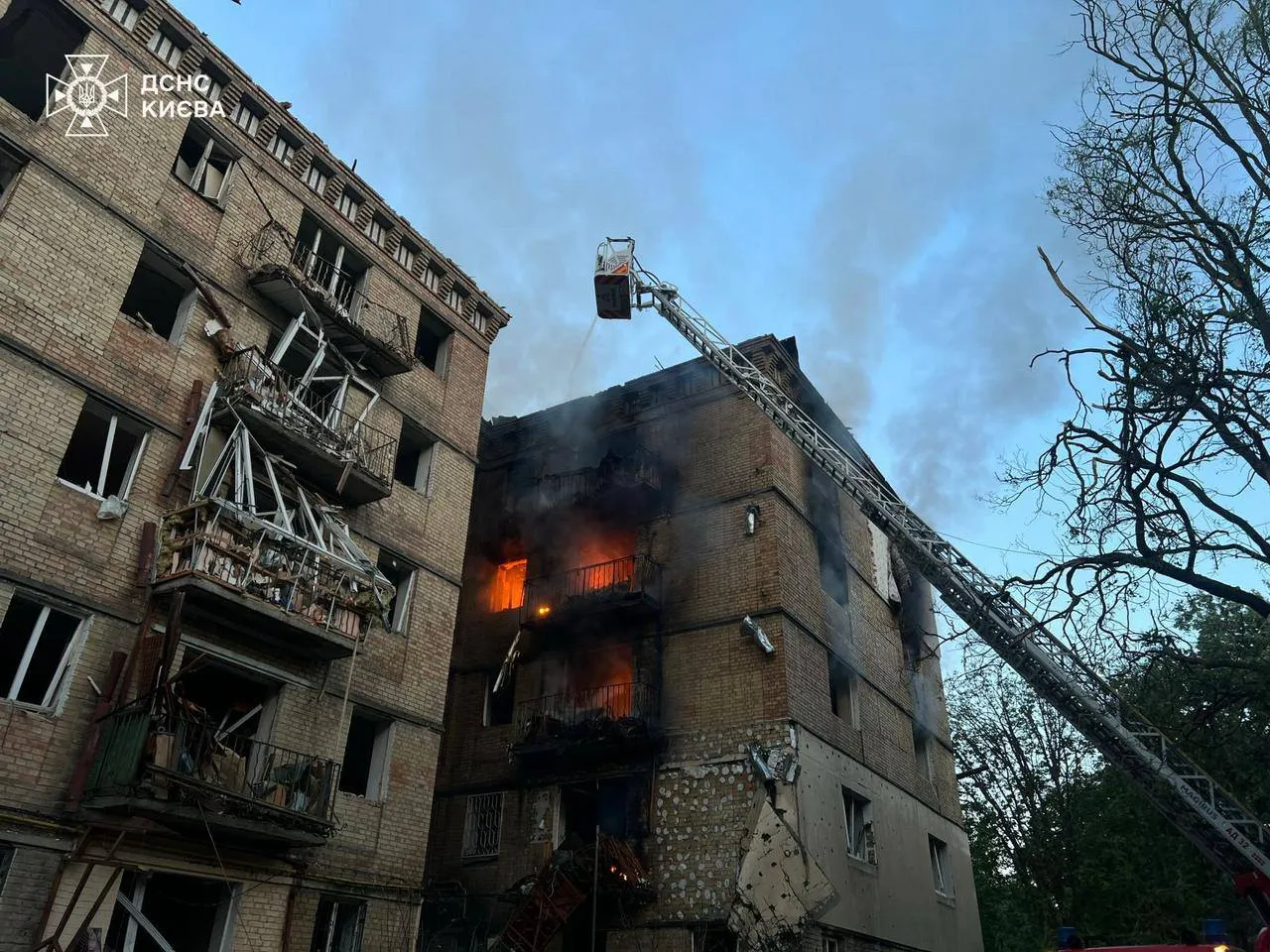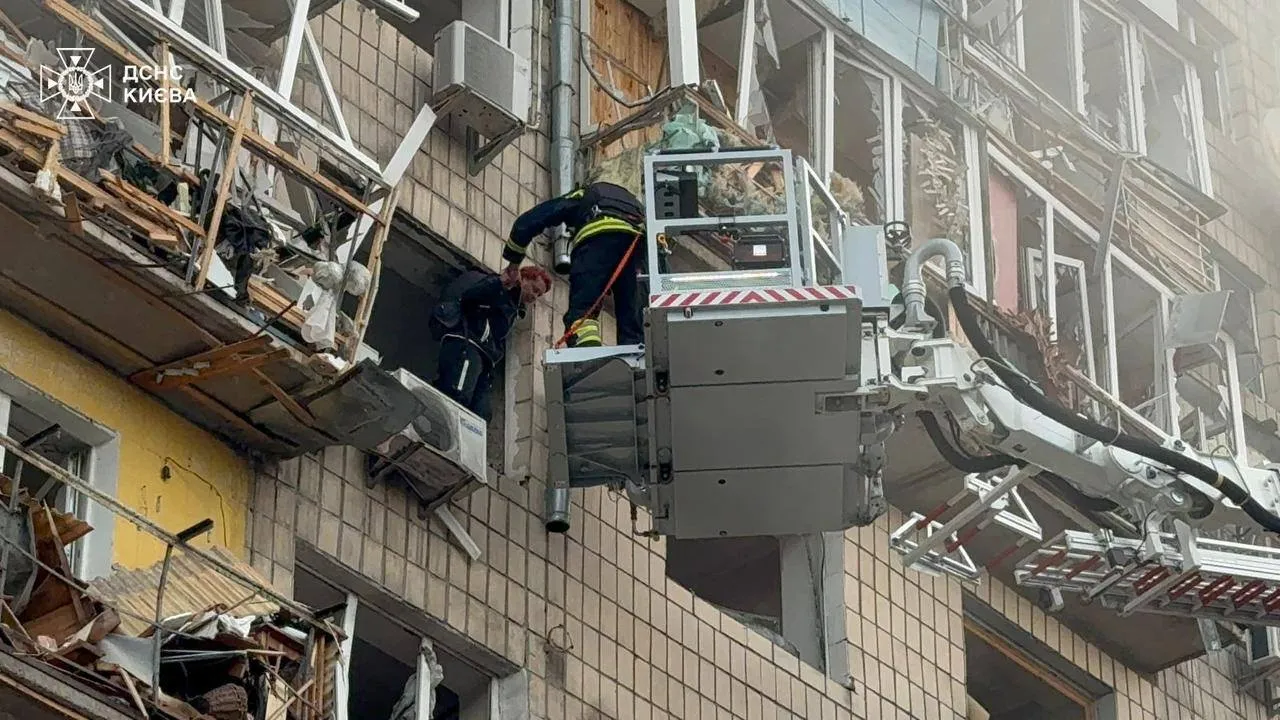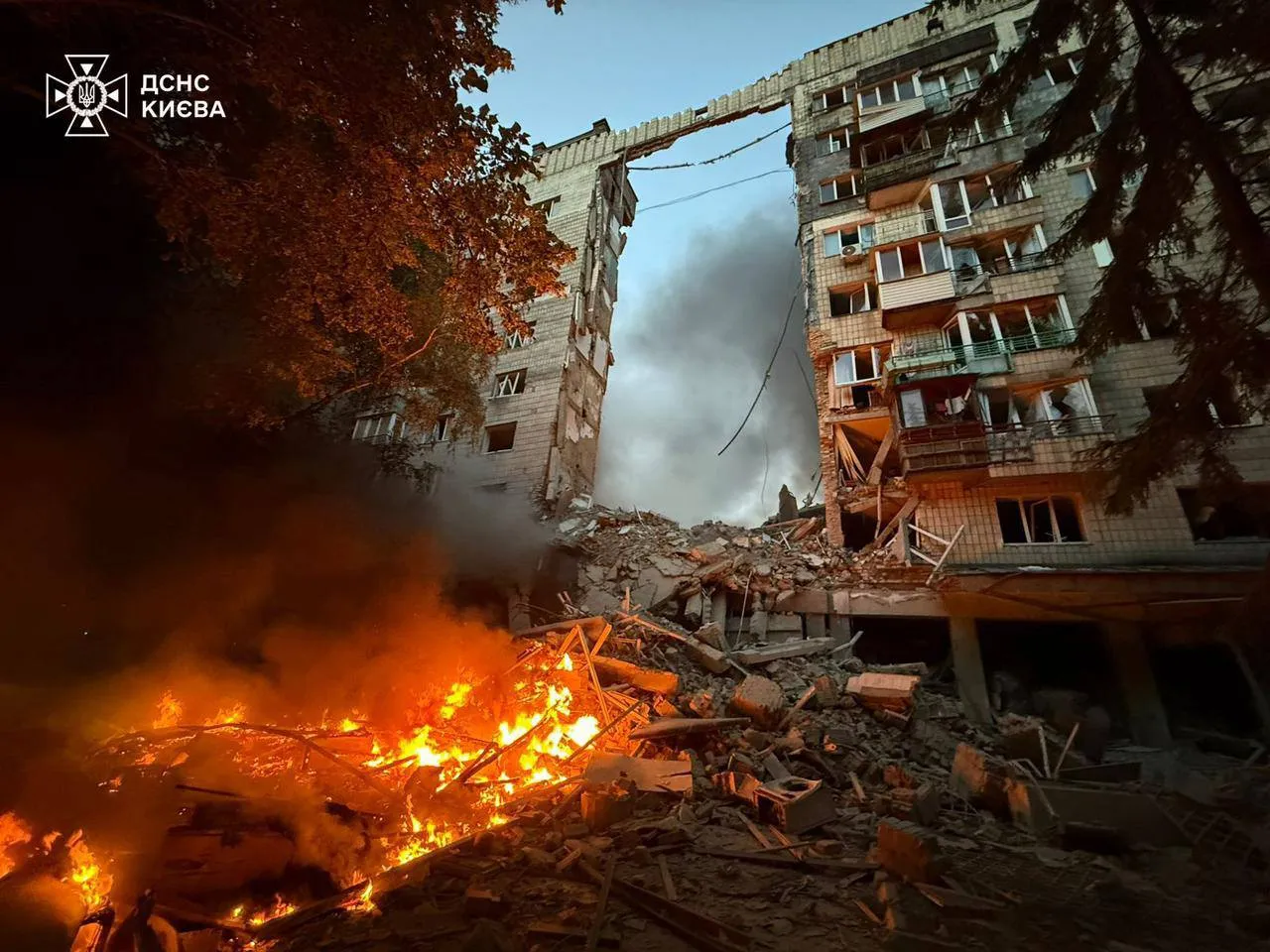KYIV, Ukraine — On the night of June 17, 2025, Kyiv experienced one of the most brutal attacks in the entire history of the russian-Ukrainian war. russia launched a massive air terror campaign, using 472 weapon systems — 440 attack drones and 32 missiles, including aeroballistic "Kinzhal" missiles, ballistic "Iskander" missiles, and cruise missiles launched from strategic Tu-95MS bombers. As a result, an entire entrance of a nine-story residential building collapsed in the Solomianskyi district of the capital, and the city was shrouded in thick black smoke. At least 14 people were killed, over 114 injured, and according to rescuers, dozens may still be trapped under the rubble.
The nine-hour attack, which only ended at dawn, became the culmination of russian tactics aimed at exhausting Ukraine’s air defense and intimidating the civilian population. “This is pure terrorism,” — said Ukrainian President Volodymyr Zelensky, calling on the USA, Europe, and the international community to take decisive actions against Moscow. The strike on Kyiv, accompanied by simultaneous attacks on Odessa and Zaporizhzhia, revealed the terrible price Ukraine pays for its resilience in the face of russian aggression.



Night of Horror in the Heart of Ukraine
The attack began shortly after midnight when hundreds of Iranian Shahed drones descended on Kyiv from the north, humming in the sky and sowing panic among residents. They were followed by two waves of Kinzhal missiles — hypersonic missiles that are difficult to intercept — at one and two o’clock in the night. After the third hour, russia launched cruise missiles from Tu-95MS aircraft, and closer to dawn, several more rockets launched from Chernihiv region struck the capital. Ukrainian air defense shot down 428 of the 472 targets, but those that got through caused catastrophic damage.
In the Solomianskyi district, a ballistic missile hit a residential multi-storey building, penetrating all nine floors and destroying an entire entrance. “The strike was so powerful that the building literally disintegrated down to the basement,” — said Interior Minister Ihor Klymenko, who arrived at the scene of the tragedy. Rescuers, risking their lives, are clearing the rubble, but hope of finding survivors is fading with each passing hour. Kyiv Mayor Vitaliy Klitschko, whose voice trembled with anger, reported that among the dead was a 62-year-old US citizen who was in a building opposite where aid was being rendered to the victims.
Fires broke out in dozens of high-rise buildings in Solomianskyi, Shevchenkivskyi, Dniprovskyi, Darnytskyi, and Sviatoshynskyi districts. In Darnytskyi, three people died, and a kindergarten sustained significant damage. Rocket debris caused fires in Podilskyi district, and in Obolon, buildings and cars were damaged. The black smoke rising over the city became visible from dozens of kilometers away, and many streets were closed to emergency services. Public transport changed routes, and over 1,100 households lost electricity.
Cassette Munitions and Genocide
An especially alarming issue was russia’s use of cluster munitions, which Klymenko demonstrated to journalists in the Nivki residential area. “These small balls are designed for maximum damage to people,” he said, holding debris of a missile in his hand. “This is not war, this is genocide.” The use of such weapons, banned by international conventions, underscores the cynical strategy of the Kremlin aimed at destroying the civilian population.
Among other victims of the attack are the damaged carriages of the train "Darnytsia-Lviv", symbolizing russia’s attempt not only to cripple infrastructure but also to paralyze the hope of ordinary Ukrainians for a normal life. The blow to railway infrastructure, according to "Ukrzaliznytsia", also affected freight cars with grain — an important export resource of Ukraine.

Odesa and Zaporizhzhia: Waves of Terror Spread
While Kyiv fought fires and ruins, russia simultaneously attacked Odesa and Zaporizhzhia. At dawn, drones struck residential buildings, an inclusive center, and a preschool in Odesa, causing fires and destruction. At least one person was killed, 13 hospitalized, and two others may still be under the rubble. In Zaporizhzhia, a multi-story building, a dormitory, and nearly 30 garages were damaged, but fortunately, there were no casualties.
These strikes are part of a broader campaign aimed at destroying Ukrainian infrastructure and intimidating the population. In recent months alone, russia has repeatedly attacked Kyiv, Kharkiv, Odessa, Kremenchuk, and even towns like Dubno and Svitlovodsk. The June 10 strike on Kyiv even damaged the Saint Sophia Cathedral — a UNESCO World Heritage site, which has become a symbol of the aggressor’s barbarism.
Geopolitical Context and International Silence
The attack occurred at a time when diplomatic efforts to achieve peace had reached a dead end. Despite recent negotiations in Istanbul, russia rejected Ukraine’s proposal for a 30-day ceasefire and insists on unacceptable conditions, such as Kyiv renouncing control over occupied territories. US President Donald Trump, who previously called for a ceasefire, this week compared the war to “a childish fight,” causing outrage in Ukraine. “When Putin talks about revenge, we know what that means — civilian suffering,” — said Ukrainian Deputy Oleksandr Merezko.
Zelensky and his team demand intensified sanctions and the provision of additional air defense systems, such as Patriot, to protect against similar attacks. However, the West, immersed in its own political crises, has yet to take decisive steps. European leaders, like European Commission President Ursula von der Leyen, call for pressure on russia, but specific actions remain lacking.
Kyiv’s Resilience
Despite the horrific losses, Kyiv demonstrates unwavering resilience. Rescuers and medical personnel work around the clock, and volunteers have launched humanitarian hubs, such as at School No. 67 on Academician Shalimov Street. Residents who survived the night in metro stations or basements are returning to their destroyed homes, trying to salvage at least some belongings. “We will not give up,” — said 38-year-old Kyiv resident Olena Shevchuk, whose house in Solomianskyi district was damaged in an explosion. “They can destroy our houses, but not our will.”
On June 18, Kyiv declared a Day of Mourning for the victims of the attack. Entertainment events were canceled, and flags lowered. For a city that has become a symbol of resistance to russian aggression, this tragedy is not only a loss but also a reminder of the price of freedom. While the world watches, Kyiv continues its fight, hoping that the international community will finally hear its cry for help.



